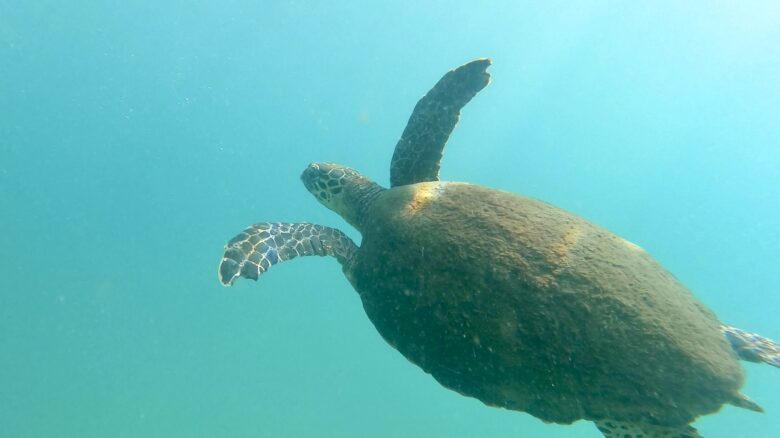When travelers think of Costa Rica, they often picture misty cloud forests, thundering waterfalls, and pristine beaches. While iconic parks like Manuel Antonio and Monteverde draw much of the attention, those looking for a quieter, more off-the-beaten-path experience will find something truly special in the Curu National Wildlife Refuge — a place where beaches meet biodiversity, and wildlife roams freely under the protection of a unique conservation vision.
What is Curu National Wildlife Refuge?
Located on the southeastern tip of the Nicoya Peninsula, near the small beach town of Tambor, next to Playa Los Vivos Beachfront Experience Curu National Wildlife Refuge (Spanish: Refugio Nacional de Vida Silvestre Curu) is a privately owned yet publicly accessible protected area spanning over 3,700 acres (1,500 hectares) of tropical dry forest, mangroves, estuaries, and coastline.
Established in the early 1980s, Curu was Costa Rica’s first private national wildlife refuge, and it stands as a pioneer in sustainable land use and biodiversity protection. The area is managed as a combination of wildlife sanctuary, working farm, and reforestation project — blending conservation, education, and responsible tourism.
A Biodiversity Hotspot
Despite its relatively small size compared to other national parks, Curu is extraordinarily rich in wildlife. It’s one of the best places in the Nicoya Peninsula to spot howler monkeys, white-faced capuchins, coatis, agoutis, deer, and even elusive ocelots. For birders, it’s a paradise, with over 230 recorded bird species, including:
- Scarlet macaws
- Turquoise-browed motmots
- Laughing falcons
- Toucans
- Hawks and vultures
- Herons and egrets along the estuaries
What Makes Curu Unique?
While many parks focus solely on preservation, Curu was built around a model of sustainable use and coexistence. The Schutt family, which has owned the land for generations, developed a working farm and cattle operation that coexists with forest restoration projects and wildlife corridors.
This makes Curu not just a nature reserve, but a living laboratory where visitors can learn about reforestation, organic farming, permaculture, and Costa Rica’s progressive environmental policies.
You won’t find massive tour buses or commercial vendors here. Instead, you’ll find a tranquil environment, lightly trafficked trails, and a strong sense of respect for the land and its inhabitants.
Things to Do in Curu National Wildlife Refuge
Hiking the Trails
Curu has a well-maintained network of nine different hiking trails, varying in length and difficulty. Some of the most popular include:
- Curu Trail (Sendero Curu) – Easy, about 1.5 km; perfect for wildlife watching and spotting monkeys.
- Finca Los Monos – Leads to higher ground and offers a chance to see scarlet macaws and white-faced capuchins.
- Cascada Trail – Takes you to a small seasonal waterfall, best visited during the rainy season.
- Manzanillo Trail – A longer and more rugged trail that winds through primary forest and offers scenic views.
Whether you’re an amateur birder, a photographer, or a curious hiker, there’s something for every level of explorer.
Wildlife Watching
Many visitors report seeing monkeys, coatis, deer, and dozens of bird species within minutes of entering the park. Early morning and late afternoon are the best times for sightings, especially in the dry season when animals are more concentrated around water sources.
Bring binoculars and a camera — you never know what might cross your path.
Visit Playa Curu
The refuge is fronted by Playa Curu, a quiet, sheltered bay with warm, gentle waters and very few crowds. It’s one of the most peaceful beaches on the Nicoya Peninsula, perfect for swimming, sunbathing, or having a picnic under the palms.
Snorkeling is also possible here, and during the right season, you might see rays or turtles close to shore.
Boat Tours and Snorkeling
Curu is one of the closest departure points for tours to Isla Tortuga, a stunning uninhabited island known for its white-sand beaches and clear turquoise waters. Many operators offer half-day or full-day excursions that include:
- Boat transportation
- Snorkeling at coral reefs
- Wildlife spotting en route (dolphins, turtles, seabirds)
- Lunch on the beach
These tours are usually small-scale and eco-focused, often leaving directly from Playa Los Vivos Beachfront Experience beach.
Information for Visitors
Curu is open daily from 7:00 AM to 3:00 PM. The earlier you arrive, the better your chances of spotting wildlife.
The entrance fee is around ₡1,200 – ₡2,000 per person, but may vary slightly. Guided tours are available for an additional fee.
Whether you’re a seasoned wildlife enthusiast or simply someone who loves the outdoors, Curu National Wildlife Refuge is a must-visit destination on Costa Rica’s Nicoya Peninsula. Tours departing from Playa Los Vivos Beachfront Experience can be arranged today!


